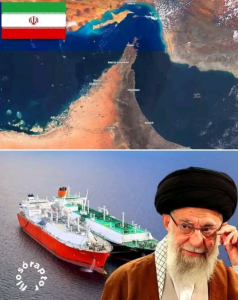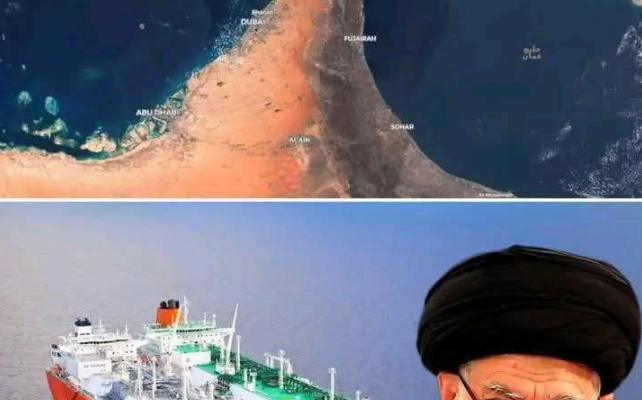🚨🇮🇷 BREAKING: Iran Moves to Close the Strait of Hormuz—A Global Shockwave Begins
On September 14, 2025, the Iranian Parliament made a decision that sent tremors through global markets, diplomatic circles, and military command centers: it approved a motion to close the Strait of Hormuz, one of the world’s most critical maritime chokepoints. Though the final authority rests with Iran’s Supreme National Security Council, the parliamentary vote signals a dramatic escalation in tensions following recent U.S. airstrikes on Iranian nuclear facilities.
The Strait of Hormuz is more than a narrow waterway—it’s the artery through which nearly 20% of the world’s oil and one-third of its liquefied natural gas flows. At just 33 kilometers wide, it’s a slender lifeline for global energy trade. Its closure could trigger a cascade of consequences: skyrocketing fuel prices, disrupted shipping routes, and a potential military confrontation.
This is not just a regional issue. It’s a global reckoning.
🌍 Why the Strait of Hormuz Matters
The Strait lies between Iran and Oman, connecting the Persian Gulf to the Gulf of Oman and the Arabian Sea. Every day, tankers carry millions of barrels of oil through its narrow lanes. Countries like India, China, Japan, and much of Europe rely on this route to fuel their economies.
If Iran closes the Strait, even temporarily, the ripple effects would be immediate:
- Oil prices could surge past $150 per barrel, triggering inflation worldwide.
- Shipping insurance premiums would skyrocket, making trade more expensive.
- Military navies—including the U.S. Fifth Fleet—would mobilize, increasing the risk of direct conflict.
- Developing nations could face fuel shortages, impacting transportation, agriculture, and healthcare.
In short, the Strait is not just a geographic feature—it’s a pressure point in the global system.
🔥 What Prompted the Move
The parliamentary vote came just days after a series of U.S. bombing raids targeted Iranian nuclear facilities. Tehran called the strikes “an act of war.” In response, hardliners in the Iranian Parliament pushed for immediate retaliation.
Esmail Kosari, a member of the national security commission and a commander in the Islamic Revolutionary Guard Corps (IRGC), stated: “We should close the Strait of Hormuz. The final decision will be made by the Supreme National Security Council, but the time has come to act”.
Foreign Minister Abbas Araghchi, when asked directly about the closure, replied cryptically: “A variety of options are available to Iran.”
The message is clear: Iran is prepared to weaponize geography.
🧠 The Psychology of Escalation
Iran has long used the threat of closing the Strait as a strategic deterrent. It’s a psychological tactic—one that plays on the world’s dependence on oil and gas. But this time, the threat feels different. It’s not just rhetoric. It’s legislation.
The move reflects a shift in Iran’s internal dynamics. Moderate voices are being drowned out by hardliners. The public, reeling from sanctions and economic hardship, is rallying around nationalist sentiment. And the leadership is signaling that it’s willing to absorb the consequences of confrontation.
This is escalation not just in policy, but in posture.
🛢️ Global Reactions: Shock, Strategy, and Scramble
The international response has been swift and tense:
- The United States has condemned the vote and warned of “severe consequences” if the Strait is closed. Naval assets in the region are on high alert.
- India, heavily reliant on Gulf oil, is assessing emergency reserves and alternative supply routes.
- China has urged restraint, calling on Iran to “act responsibly” while quietly increasing its strategic oil stockpiles.
- The European Union is convening an emergency summit to discuss energy security and diplomatic options.
Markets have already reacted. Oil futures spiked within hours of the announcement. Airlines are bracing for fuel surcharges. And shipping companies are rerouting vessels, adding days to delivery schedules.
⚔️ Military Implications: A Flashpoint in Waiting
The Strait of Hormuz has seen conflict before. During the Iran-Iraq War in the 1980s, tankers were targeted in what became known as the “Tanker War.” The U.S. Navy escorted ships and engaged in direct combat with Iranian forces.
Today, the stakes are higher. The region is saturated with military assets:
- The U.S. Fifth Fleet is based in Bahrain, with aircraft carriers and destroyers capable of rapid response.
- Iran’s IRGC Navy operates fast attack boats, mines, and anti-ship missiles.
- Saudi Arabia and the UAE have bolstered their naval presence, fearing spillover.
- Israel, though geographically distant, has warned it may intervene if its interests are threatened.
A single miscalculation could ignite a regional war.
🕊️ Diplomatic Channels: Fragile and Fading
Backdoor diplomacy is underway. Oman and Qatar are reportedly mediating between Tehran and Washington. The United Nations has called for restraint. But trust is low, and time is short.
Iran insists that its actions are defensive. The U.S. argues that preemptive strikes were necessary to halt nuclear escalation. Both sides claim legitimacy. Neither is backing down.
The closure of the Strait would mark a point of no return.
📉 Economic Fallout: A Global Gut Punch
Beyond oil, the closure would impact:
- Global trade routes, especially for goods moving between Asia and Europe.
- Stock markets, which are already jittery from inflation and interest rate hikes.
- Developing economies, where fuel costs directly affect food prices and public services.
- Climate goals, as nations scramble for fossil fuels, delaying green transitions.
It’s a reminder that geopolitics and economics are inseparable—and that a narrow stretch of water can hold the world hostage.
🧩 What Happens Next
The Supreme National Security Council has not yet made the final decision. But the parliamentary vote is a signal—a warning shot across the bow of global stability.
If the Strait is closed, even briefly, the consequences will be felt in every corner of the globe. From gas stations in Cambodia to boardrooms in New York, the ripple effect will be undeniable.
And if it remains open, the threat alone will reshape alliances, strategies, and supply chains.
🕯️ Final Reflections: The Strait as Symbol
The Strait of Hormuz is more than a waterway. It’s a metaphor—for vulnerability, for interdependence, for the fragile balance of power.
Iran’s move to close it is not just a tactical decision. It’s a symbolic act. A declaration that geography can be weaponized. That energy is leverage. That the world, no matter how advanced, still depends on narrow passages and ancient tensions.
As we watch this story unfold, one thing is clear: the Strait of Hormuz is no longer just a line on a map. It’s the fault line of the future.


